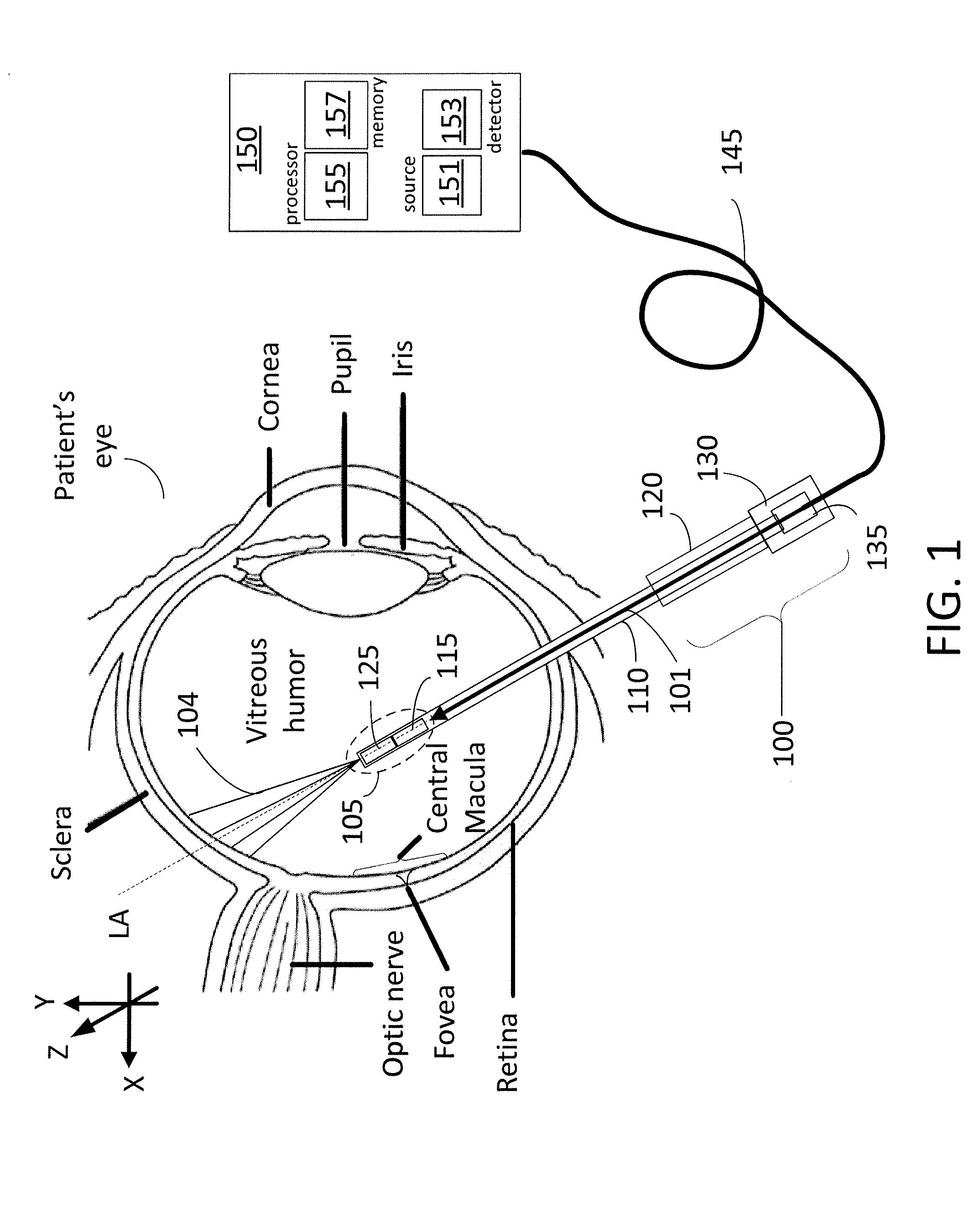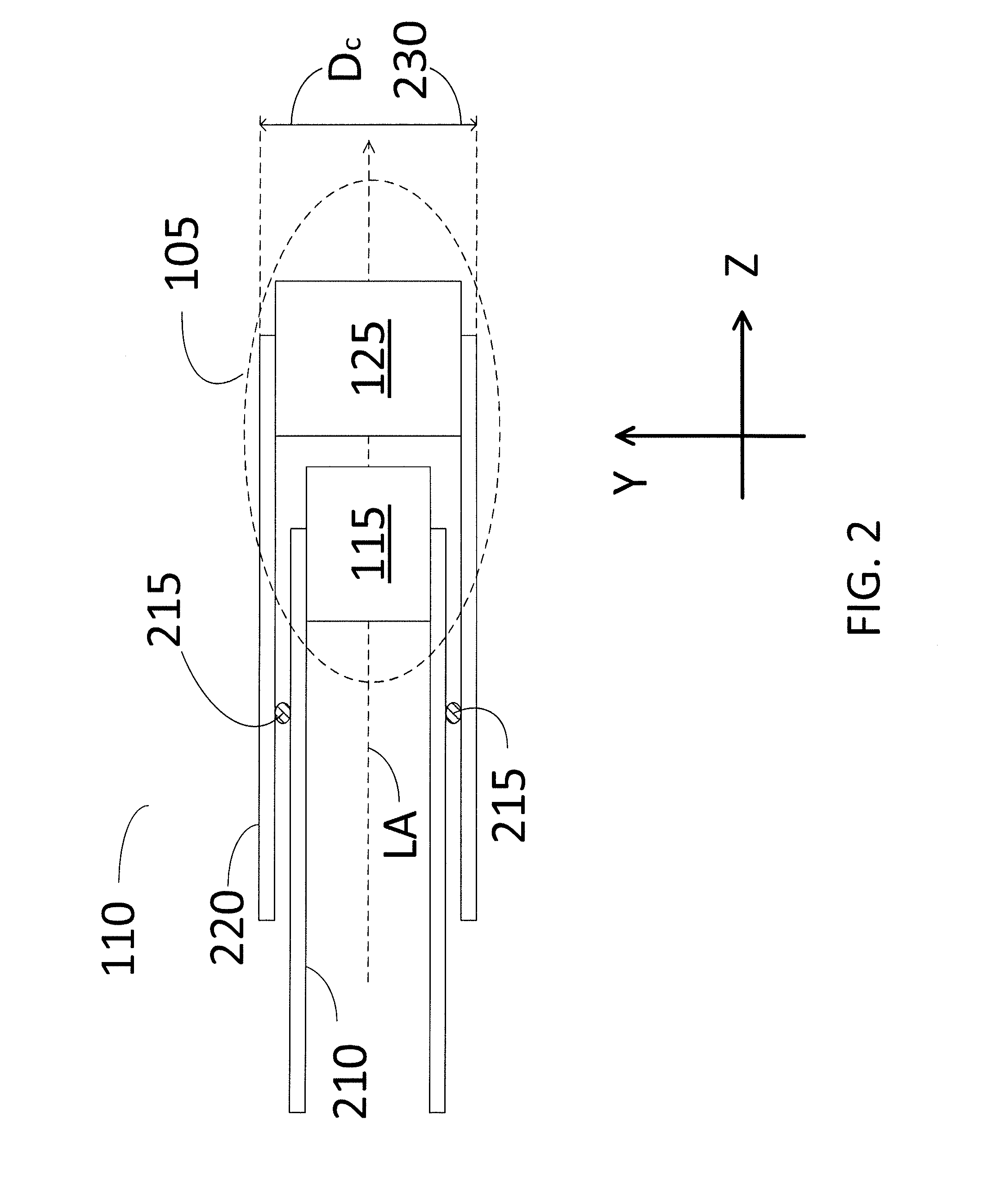Anamorphic Lens for Rotational Scanning Laser Probe
a laser probe and anamorphic lens technology, applied in the field of laser probes, can solve the problems of undetectable procedures, complex controls of these three systems, and increased likelihood of malfunction, and achieve the effect of small diameter
- Summary
- Abstract
- Description
- Claims
- Application Information
AI Technical Summary
Benefits of technology
Problems solved by technology
Method used
Image
Examples
Embodiment Construction
[0026]Optical probes for ophthalmic procedures including Optical Coherence Tomography (OCT) imaging generally include a fiber-to-lens assembly generating a slowly converging beam with a small numerical aperture (NA) to form an elongated focus spot at an imaging distance from the tip of the probe. The imaging beam is typically directed to a surface point on the target tissue with the imaging distance placing the focus spot to a desired depth within the target tissue. The probe is configured to image the target in a range of depths corresponding to the surface point. This is often referred to as generating an A-scan. The A-scan can be generated either sequentially or synchronously. As described above, after the A-scan is completed, the beam can be moved to a subsequent point on the surface to generate a new A-scan. Generating a sequence of A-scans at a set of points along a line is referred to as a B-scan; along a raster pattern a C-scan.
[0027]To respond to the above described needs a...
PUM
 Login to view more
Login to view more Abstract
Description
Claims
Application Information
 Login to view more
Login to view more - R&D Engineer
- R&D Manager
- IP Professional
- Industry Leading Data Capabilities
- Powerful AI technology
- Patent DNA Extraction
Browse by: Latest US Patents, China's latest patents, Technical Efficacy Thesaurus, Application Domain, Technology Topic.
© 2024 PatSnap. All rights reserved.Legal|Privacy policy|Modern Slavery Act Transparency Statement|Sitemap



